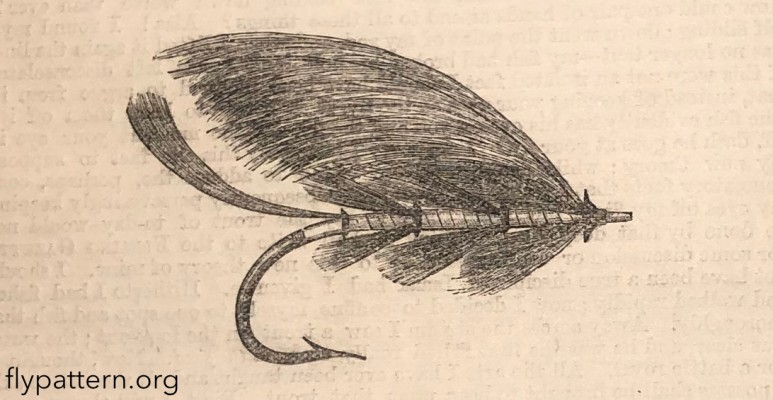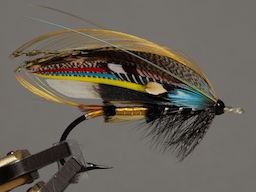| Author | Kelson, George M. |
| Book | The fishing gazette: On the description of salmon flies, Major Traherne's Patterns |
| Book Edition | N/A |
From "The fishing gazette" - August 2nd, 1884 FROM the earliest to the latest records in fly dressing I believe there has been no stress laid upon the importance of underwork. I venture to assert that it is impossible to make the body correctly tapered, neither is it likey the wings will "arch" properly if we have to steer over bead-like lumps in the silk cause by unnecessary knobs, - ridges, produced by winding over preceding turns of silk, or rutty points occasioned by the incorrect management of the treble before it is bound on the hook. There need be no knots whatever in fixing the gut, and the half-hitch incompletion can be levelled by the one touch of varnish as previously directed. Renew the silk for fastening the tab and unwind or divest the twist of the silver or gold, thereby exposing the internal part of it, which is to be evenly and closely bound over as you work towards the barb of the hook: the twist, then, has a smooth space to cover in its finishing return over the well-waxed tying silk. If floss silk follows the twist which is generally directed, the first coil of the tag should be immediately above the point of the barb, depriving it of its silver at the other end; the same care being taken with the tying silk, as in the former instances, in preparing the way for the floss to have a uniform surface to encircle to the tail. If all the tag is twist, as with "Sylvia, "Col. Rocke," "Kingfisher," &c., it should not extend so far on the hook, but started at such place supposing you took an upright line midway between the root of the barb and the point of the hook; too much tag on the bend causes rudder-action in some streams and the fly wobbles. When you have cut off the required length of floss, susppend it from the thumb and forefinger of the left hand to get any curl out with the same fingers of the right hand, by manipulation at the other extremity; strech and flatten it, but in so doing be very careful that the hands are clean, especially the thumb and finger, when they are drawn down the shreds afterwards to smooth it. Wind it closer as you progress to insure a gentle taper to the tail, continuing the smoothing process with each turn, and fix it under the bare hook up to the gut, where another half-hitch can be made and touched with varnish; this, in a minute or two, will be nearly dry, then level it with the stiletto. If silver or gold twist, ribs the tag, either of them can be made sure with the floss under the hook, also to meet the gut, stripping it again under the tying silk. |
|
| Tags | traherne, kelson, fishinggazette, |
Material
- Tag: Gold twist and purple silk (same shade as throat of chatterer)
- Tail: Topping
- Butt: Black herl
- Body: Of gold tinsel in three equal sections, butted with black herl
- Hackle: Green mackaw at the termination of each division
- Wings: Golden toppings
- Horns: Blue macaw
- Head: Black herl.

